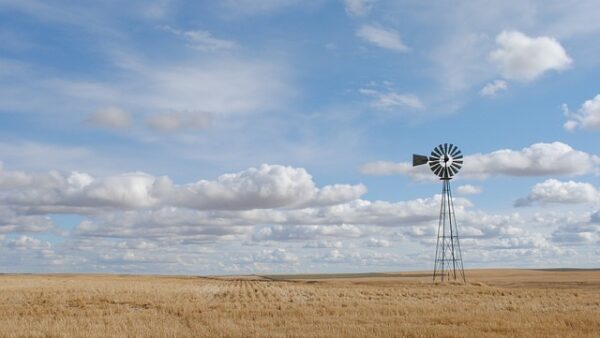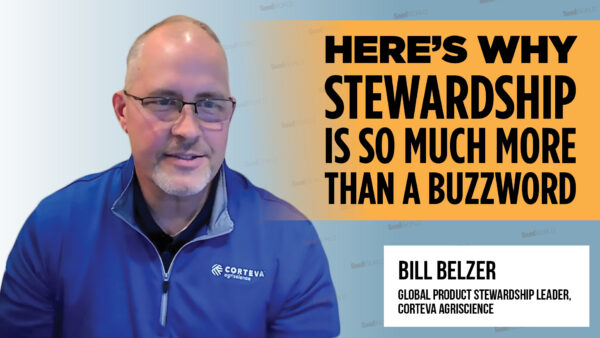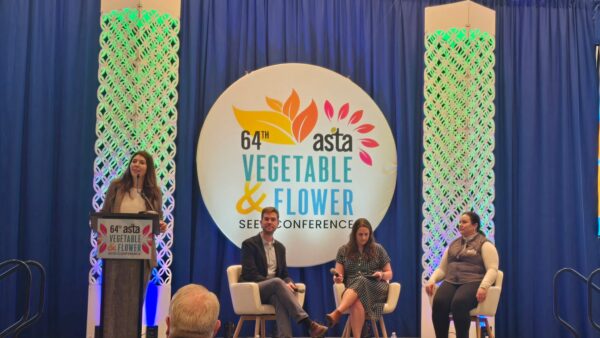More than ever before, working together toward common goals is what’s behind the success of the seed industry.
_x000D_
Strength in numbers: It’s what will define the seed industry. The sheer number of seed-related associations that exist in Canada and across the globe is proof that this is one industry in which members are living out the wisdom that people are better off working together than going it alone, from companies to associations and non-governmental organizations._x000D_
_x000D_
“The extent to which the big issues are unifying as opposed to being divisive is significant,” says Glyn Chancey, executive director of the Canadian Seed Growers’ Association (CSGA). “It’s actually difficult to find issues where there’s intense fundamental disagreement._x000D_
_x000D_
“I chose this role with CSGA because of the people, their professional standards and their creativity. No matter what their differences, when they identify an issue that needs to be addressed, they pull together. That’s a reality I’ve been reminded of on a daily basis these past number of months.”_x000D_
_x000D_
Jeff Reid, chief executive officer for SeCan, also attests to the people power that exists in the seed industry. With more than 700 independent seed business members from coast-to-coast engaged in seed production, processing and marketing, SeCan celebrated 40 years in business in 2016 as Canada’s largest-selling brand of certified seed._x000D_
_x000D_
“SeCan is probably one of the first examples of a successful 3P partnership in Canadian seed,” he says._x000D_
_x000D_
At an international level, Garlich Von Essen knows that success comes from bringing people together to achieve great things. As secretary-general of the European Seed Association (ESA), he says creating a common team spirit is the key to ensuring the industry moves forward and not back, even in challenging times._x000D_
_x000D_
“Sharing is the key word,” he says. “How do we better share our resources? That’s one of the big things at the top of our agenda.”_x000D_
_x000D_
One facet worth sharing is germplasm, and that’s what the Global Crop Diversity Trust is set up to do — conserve and make accessible crop diversity in plant gene banks around the globe. Marie Haga, executive director, explains that the trust has historically worked with international gene banks around the globe to preserve the most unique and important collections. Now, she says, they are eager to start working at the national level in addition to the Svalbard Global Seed Vault._x000D_
_x000D_
Erin Armstrong, director of industry and regulatory affairs for CANTERRA SEEDS also echoes that sentiment. “Our core approach to all parts of our business remains partnerships,” she says. “Even with our growth plans, we remain committed to working with partners in everything we do.”_x000D_
_x000D_
As an example, Armstrong notes the new partnership with Limagrain to form Limagrain Cereals Research Canada (LCRC), for which she serves as the chief executive officer. The partnership will build upon each other’s research and germplasm for the best new products, according to Armstrong._x000D_
_x000D_
Syngenta, too, is focused on partnering with governments, academia and NGOs to achieve the goals set forth in its Good Growth Plan by 2020. Through the compilation of data and partnerships, the Syngenta leadership team created six actionable and trackable goals to more sustainably produce food, fuel and fibre in the future, explains Linda Nel, Syngenta Seedcare global product management lead._x000D_
_x000D_
Leading the Way_x000D_
_x000D_
Like Syngenta did with its Good Growth Plan and an eye on creating change for a better future, Chancey is leading CSGA through two major initiatives that could serve to redefine its role in an industry on the brink of major change. CSGA is conducting its own strategic plan, to define where it is headed and what its role should be. At the same time, CSGA is one of six major seed sector groups taking part in the Seed Synergy project, an ambitious plan to develop a vision for the seed sector in Canada._x000D_
_x000D_
In other words, Chancey is no stranger to the importance of working with others to achieve common goals, and he says the time is perfect for taking that spirit of collaboration to new heights._x000D_
_x000D_
“There’s a younger face and a younger attitude that’s more prevalent now,” he says. “There’s always been a balance of people in this industry who focus more on the history of the sector and less on the future, and people who focus on the future and are less concerned with the past. I think the balance between the two has shifted based on conversations I’ve had and where people’s interests lie.”_x000D_
_x000D_
Armstrong adds that much of the conversation regarding the future is focused on value capture or royalty collection, as well as wheat research priorities and the overall Seed Synergy project._x000D_
_x000D_
As the CSGA’s strategic review and the Seed Synergy project begin to ramp up in 2017 and move into its initial member consultation phase, Chancey prepares to help guide the CSGA board through what could be a challenging but exciting time for the association._x000D_
_x000D_
According to Von Essen, the same organizational challenges face the ESA as it moves into 2017. It completed its own strategic review in 2015._x000D_
_x000D_
“One thing at the top of our agenda is the collaboration between different levels of the seed sector organizations,” he says. Those organizations include groups at both the national and international levels, including the International Seed Federation. “We need to look at how we can further improve our collaborations by making use of the latest in information technology, for example,” Von Essen adds._x000D_
_x000D_
The annual ESA member conference has seen record attendance during the past few years, which Von Essen attributes to the seed industry in Europe working together better than ever before. ESA has more than 35 national member associations, from EU Member States and beyond, representing several thousand seed businesses, as well as more than 70 direct company members, including from seed-related industries._x000D_
_x000D_
“While we do have some consolidation happening, there is very vibrant competition and collaboration that I think explains those increasing numbers,” he says._x000D_
_x000D_
For Reid, it’s this collaboration between groups that has helped bring SeCan where it is today. SeCan lays claim to hundreds of varieties of cereals, oilseeds, grasses and legumes, and has provided plant breeders with millions in royalties in return._x000D_
_x000D_
At the time of SeCan’s inception, growers were looking for a good middle ground between the two types of seed distribution systems that were prevalent — seed was either doled out by private companies that bought the rights to it, or by government. Both systems had major drawbacks._x000D_
_x000D_
SeCan now has the top varieties in Canadian Western Red Spring, Canadian Prairie Spring, durum, flax, malt barley, oats and soybeans._x000D_
_x000D_
“A lot of companies are vertically integrated and they do everything from germplasm development right through to final sales to the farmer,” Reid says. “In our case we look to the future and say, ‘where are our strengths and what do our partners need?’_x000D_
_x000D_
“We see our role as being one to help finish products, shepherd them through testing and registration, get breeder seed multiplied and into the hands of the most effective seed growers right across Canada.”_x000D_
_x000D_
Challenges Ahead_x000D_
_x000D_
While there is indeed strength in numbers, there are challenges as well. Perhaps one of the biggest ones to take place in 2016 was Brexit, which saw the United Kingdom vote to leave the European Union._x000D_
_x000D_
The U.K. has yet to formally leave the EU, but according to Von Essen, the conversation is just beginning as to how to protect the European seed industry as the Brexit process goes on._x000D_
_x000D_
“There is no blueprint for this kind of discussion. We hope in the end common sense will prevail, and people will see the value of our current seed regulatory system,” he says._x000D_
_x000D_
Another area where common sense is needed is with the use of neonicotinoids. In 2013, Europe put restrictions in place for two years limiting the use of neonicotinoids while new data was investigated, says Syngenta’s Nel._x000D_
_x000D_
“This has not been changed; it’s now 2016,” she says. “There’s only been one change and it’s been for the worse. Now the French will ban the use of neonics across all crops and for all uses in 2018 … While it’s bad for us to lose one of the most modern tools, it’s worse for the growers.”_x000D_
_x000D_
Nel shares that Syngenta interviewed more than 600 growers and their advisers about their crop production since the restrictions were put in place._x000D_
_x000D_
“They are saying they have 50 per cent more sprays,” Nel says, noting that they have increased spraying and increased costs but lower yields. As a result, growers are planting fewer acres to oilseed rape._x000D_
_x000D_
Canada faces its own regulatory hurdles. The federal government has signalled to the seed industry that it plans to review the country’s seed legislation, which according to Chancey is what prompted the Seed Synergy project in the first place._x000D_
_x000D_
At this point, the results are anyone’s guess._x000D_
_x000D_
“The uncertainty that’s been created by that has left many seed growers wondering whether the world they know is up for discussion and potentially subject to change,” Chancey says. “The fact we’re now collectively as an industry talking about what that future might look like has got [the federal government’s] attention.”_x000D_
_x000D_
Chancey adds that the Seed Synergy exercise could expand to include the entire value chain, and ultimately help the industry gain the social license needed to ensure a robust future for itself at a time when consumers have access to more information — and also misinformation — than ever._x000D_
_x000D_
Reid agrees, and sees the Seed Synergy project as a positive one that once again provides strength in numbers; despite the fact SeCan isn’t directly involved._x000D_
_x000D_
“It’s good to take a step back and ask, ‘Who are we and what are we trying to accomplish?’ For example, I think many of us thought we’d be past this whole GMO discussion by now, and clearly we’re not,” he says. “Everyone in this industry needs to get out in front of the public and work to be good stewards and do the right thing in terms of environmental sustainability and safe and affordable food.”_x000D_
_x000D_
Armstrong is encouraged by the Seed Synergy project._x000D_
_x000D_
“I think it’s great that those six organizations are sitting down together and having conversations,” she says. “They are sitting down with a blank sheet of paper and asking ‘where do we want to be and how do we get from where we are to there? What needs to be done and who should be doing what?’”_x000D_
_x000D_
This, Armstrong says, will help the industry speak with a consistent voice — not necessarily one voice, but a consistent one so as not to confuse._x000D_
_x000D_
“This will help to avoid any overlap and discover any gaps,” she adds, as there is certainly no shortage of issues or things to be done._x000D_
_x000D_
_x000D_
_x000D_
ABOUT THE GIANTS:_x000D_
_x000D_

_x000D_
Responsible for trait and license agreements, intellectual property protection and regulatory issues, Armstrong has no shortage of projects to tackle. She joined CANTERRA in 2008 following her tenure as president and CEO of the Brewing and Malting Barley Research Institute. She’s also held positions with Canada Malting Co., Ltd. and General Mills, Inc. Armstrong serves as chair of the Intellectual Property Committee for the Canadian Seed Trade Association; chair of Canadian Food Inspection Agency’s Plant Breeders Rights Advisory Committee; and co-chair of Agriculture and Agri-Food Canada’s Biotech Wheat Working Group, part of the Grains Round Table._x000D_
_x000D_

_x000D_
Chancey took over as CSGA’s executive director in 2015, after many years as a federal government employee. During that time, he held executive positions with a number of government departments and agencies, but it was his role as the Canadian Food Inspection Agency’s director of the Plant Production Division that fostered his strong relationship with Canada’s seed industry._x000D_
_x000D_
Marie Haga, Global Crop Diversity Trust Executive Director_x000D_
_x000D_

_x000D_
Linda Nel, Syngenta Seedcare Product Management Lead_x000D_
_x000D_

_x000D_

_x000D_
Reid is the chief executive officer and is accountable to the board of directors. He is responsible for day-to-day operations and for developing programs within the policies established by the board. Previously, Reid served as manager at C&M Seeds in Palmerston, Ont. He served as president of the Canadian Seed Trade Association in 2008-09._x000D_
_x000D_
Garlich Von Essen, European Seed Association Secretary-General_x000D_
_x000D_














